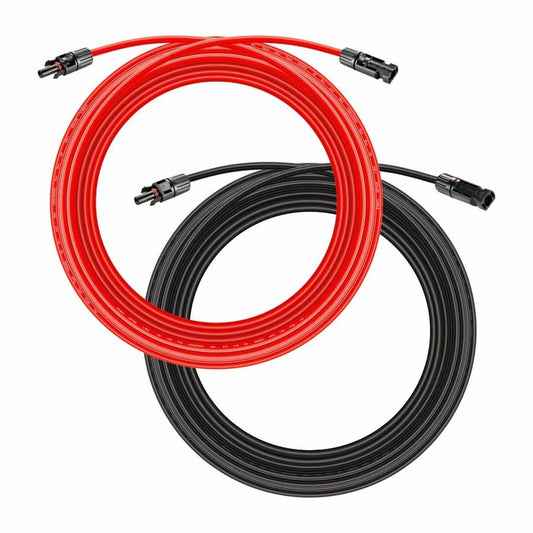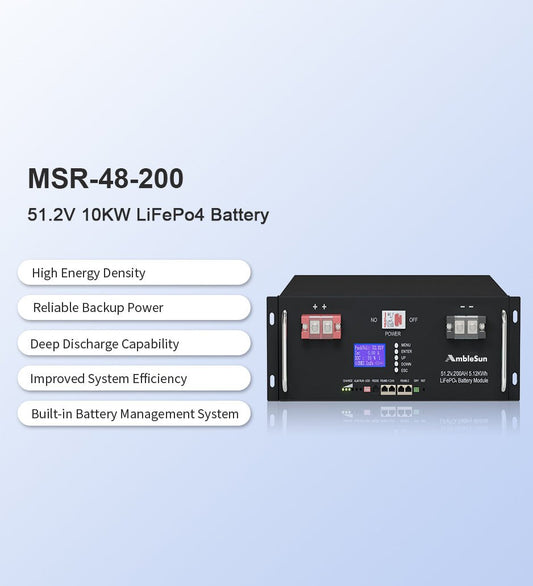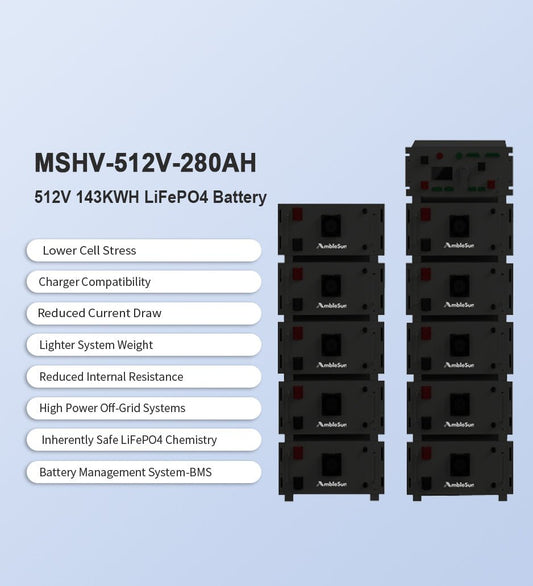Your Cart
Lifepo4 Battery Maintenance Tips

Lifepo4 Battery Maintenance Tips: Maximizing Performance and Longevity
Introduction
Lithium Iron Phosphate (LiFePO4) batteries, commonly known as Lifepo4 batteries, have gained significant popularity due to their superior performance, safety, and longevity compared to other battery types. These batteries are used in a wide range of applications, from solar energy storage and electric vehicles to portable electronics and marine equipment. To ensure that Lifepo4 batteries perform optimally and have a long service life, proper maintenance is essential. This comprehensive blog will delve into various Lifepo4 battery maintenance tips, covering everything from basic care practices to advanced maintenance strategies.
Table of Contents
- Understanding Lifepo4 Batteries
- What are Lifepo4 Batteries?
- Key Benefits of Lifepo4 Batteries
- Basic Maintenance Tips
- Proper Charging Practices
- Avoiding Deep Discharges
- Temperature Management
- Advanced Maintenance Strategies
- Balancing Cells
- Using Battery Management Systems (BMS)
- Regular Inspections and Monitoring
- Storage Tips
- Short-term Storage
- Long-term Storage
- Troubleshooting Common Issues
- Identifying and Resolving Voltage Imbalances
- Handling Overcharging and Over-discharging
- Enhancing Lifespan and Performance
- Implementing Regular Maintenance Routines
- Upgrading Charging Equipment
- Safety Precautions
- Safe Handling and Disposal
- Preventing Short Circuits and Physical Damage
- Conclusion

- Understanding Lifepo4 Batteries
What are Lifepo4 Batteries?
Lifepo4 batteries are a type of lithium-ion battery that uses lithium iron phosphate (LiFePO4) as the cathode material. They are known for their high safety profile, long cycle life, and stable chemical structure. Unlike other lithium-ion batteries, Lifepo4 batteries are less prone to overheating and thermal runaway, making them ideal for high-demand applications.
Key Benefits of Lifepo4 Batteries
- Safety: Lifepo4 batteries have a stable chemistry, reducing the risk of fire and explosion.
- Longevity: They offer a long cycle life, often exceeding 2000 charge-discharge cycles.
- Performance: These batteries provide consistent power output and are capable of high discharge rates.
- Environmentally Friendly: Lifepo4 batteries are less harmful to the environment compared to lead-acid batteries.
- Basic Maintenance Tips
Proper Charging Practices
Proper charging is crucial for maintaining the health and longevity of Lifepo4 batteries. Here are some key points to consider:
- Use the Right Charger: Always use a charger specifically designed for Lifepo4 batteries. These chargers are programmed to match the charging profile of Lifepo4 chemistry.
- Avoid Overcharging: Overcharging can lead to heat buildup and potential damage. Ensure the charger has a reliable cut-off mechanism to prevent overcharging.
- Charge in a Cool Environment: Charging in high temperatures can degrade the battery's performance. Aim to charge your batteries in a cool, well-ventilated area.
Avoiding Deep Discharges
Deep discharges can significantly shorten the lifespan of Lifepo4 batteries. To avoid this, follow these guidelines:
- Monitor Voltage Levels: Keep an eye on the battery voltage and avoid letting it drop below 2.5 volts per cell.
- Use a Low Voltage Cutoff: Many battery management systems (BMS) come with a low voltage cutoff feature that disconnects the load when the voltage drops too low.
- Charge Regularly: Regularly charge the battery to keep it within the optimal voltage range, usually between 3.2 and 3.4 volts per cell.
Temperature Management
Temperature plays a critical role in the performance and lifespan of Lifepo4 batteries. Here are some tips for managing temperature:
- Avoid Extreme Temperatures: Lifepo4 batteries perform best in temperatures between 0°C and 45°C. Avoid exposing them to temperatures outside this range.
- Use Insulation: In cold environments, use insulation to protect the battery from freezing temperatures.
- Monitor Battery Temperature: Use a temperature monitoring system to keep track of the battery's temperature during operation and charging.

- Advanced Maintenance Strategies
Balancing Cells
Cell balancing ensures that all cells in a Lifepo4 battery pack charge and discharge evenly, which is crucial for the overall health of the battery. Here’s how to balance cells effectively:
- Use a BMS with Balancing: A good battery management system will include cell balancing features that equalize the charge across all cells.
- Manual Balancing: For DIY enthusiasts, manual balancing can be done using a cell balancer or balancer charger. This process involves charging each cell to the same voltage level individually.
Using Battery Management Systems (BMS)
A Battery Management System (BMS) is essential for the safe and efficient operation of Lifepo4 batteries. Here’s why:
- Protection Features: A BMS provides protection against overcharging, over-discharging, and short circuits.
- Monitoring: It continuously monitors the health and status of each cell, ensuring balanced charging and discharging.
- Data Logging: Advanced BMS can log data such as voltage, current, and temperature, which is useful for maintenance and troubleshooting.
Regular Inspections and Monitoring
Regular inspections help identify potential issues before they become serious problems. Here’s what to look for:
- Physical Damage: Check for any signs of physical damage such as bulging, cracks, or leaks.
- Connection Integrity: Ensure all connections are secure and free from corrosion.
- Voltage and Temperature: Regularly check the voltage and temperature of each cell using a multimeter or monitoring system.
- Storage Tips
Short-term Storage
For short-term storage, typically less than a month, follow these tips to keep your Lifepo4 batteries in good condition:
- State of Charge: Store the battery at around 50-60% state of charge. This helps minimize stress on the cells.
- Cool Environment: Store the battery in a cool, dry place away from direct sunlight and heat sources.
Long-term Storage
For long-term storage, additional steps are necessary to maintain battery health:
- State of Charge: Store the battery at 50% state of charge to prevent over-discharge or overcharge during storage.
- Temperature Control: Store the battery in a cool, stable environment, ideally between 10°C and 25°C.
- Periodic Checks: Every few months, check the battery's voltage and recharge it to 50% if necessary.
- Troubleshooting Common Issues
Identifying and Resolving Voltage Imbalances
Voltage imbalances can occur when cells in a battery pack have different voltage levels. Here’s how to identify and resolve them:
- Symptom: The battery pack’s performance drops, or the BMS indicates an imbalance.
- Resolution: Use a cell balancer or manually balance the cells by individually charging the lower voltage cells.
Handling Overcharging and Over-discharging
Overcharging and over-discharging can severely damage Lifepo4 batteries. Here’s how to handle these issues:
- Overcharging: If overcharging occurs, disconnect the battery immediately and let it cool down. Check the charger for faults and ensure it has a reliable cut-off mechanism.
- Over-discharging: If the battery is over-discharged, recharge it slowly with a low current to prevent stress on the cells.
- Enhancing Lifespan and Performance
Implementing Regular Maintenance Routines
Regular maintenance routines can help enhance the lifespan and performance of Lifepo4 batteries. Here are some key practices:
- Monthly Inspections: Conduct monthly inspections to check for physical damage, connection integrity, and cell balance.
- Quarterly Deep Cycle: Perform a deep cycle every three months to recalibrate the battery’s state of charge readings.
- Annual Capacity Test: Once a year, conduct a capacity test to measure the battery’s capacity and ensure it meets the specifications.
Upgrading Charging Equipment
Using high-quality charging equipment can make a significant difference in the performance and longevity of Lifepo4 batteries. Consider the following:
- Smart Chargers: Invest in smart chargers that are specifically designed for Lifepo4 batteries and include features like temperature compensation and multi-stage charging.
- Solar Charge Controllers: For solar energy systems, use MPPT (Maximum Power Point Tracking) charge controllers to optimize charging efficiency.

- Safety Precautions
Safe Handling and Disposal
Safety should always be a priority when handling and disposing of Lifepo4 batteries. Follow these guidelines:
- Handling: Always wear protective gloves and goggles when handling batteries to protect against chemical leaks.
- Disposal: Dispose of Lifepo4 batteries at designated recycling centers. Do not throw them in regular trash as they can be hazardous to the environment.
Preventing Short Circuits and Physical Damage
Preventing short circuits and physical damage is crucial for maintaining the safety and performance of Lifepo4 batteries. Here’s how:
- Short Circuits: Avoid connecting the positive and negative terminals directly. Use insulated tools and connectors.
- Physical Damage: Protect the battery from impacts and punctures by using appropriate casings and mounts.
- Conclusion
Maintaining Lifepo4 batteries involves a combination of proper charging practices, temperature management, cell balancing, and regular inspections. By following these maintenance tips, you can ensure that your Lifepo4 batteries deliver optimal performance and have a long service life. Remember, safety is paramount, so always handle and dispose of batteries according to recommended guidelines. With the right care and attention, Lifepo4 batteries can be a reliable and efficient power source for a wide range of applications.
This comprehensive guide provides detailed insights into maintaining Lifepo4 batteries, from basic care to advanced strategies. By implementing these tips, you can maximize the lifespan and performance of your Lifepo4 batteries, ensuring they remain a dependable power source for years to come.
No comments
















0 comments